|
Yamashiro Yoshitomo demonstrates 'aramed' and 'armed' aspects of this interesting Okinawan Styles (through a series of videos) - although in this short clip there is an emphasis upon 'Senaka No Kitae' or 'striking through the correct use of the back': As is similar within the Chinese concept of 'Tong Bei' (通背) - or 'correctly passing and mediating energy (force) through region of the back' - a master of this technique is not only fully 'rooted' when stood bolt-upright (and exceedingly difficult to upoot ot push-over) - but he or she can deliever highly destructive blows without first artificially dropping the bodyweight achieved by lowering, widening or elongating the stance (as younger people are prone to do). This radically reduces reaction time and allows a practitioner to effectively 'move within' and 'between' the defensive gaps offered by the oppoment and is a vitally important element of 'Iron Vest' achieved through aligning the bone structure. The relatively 'high stance' encourages and opponent to habitually 'strike' without thinking - only to hit hardened bone enlivened through correctly 'dropping' bodyweight and efficiently 'rising' rebounding force - two sides of the same force operating simultaneously from within the centre of the bone-marrow outward. As I am in no way an epert in Okinawan Karate-Do - I find these videos by accident and then 'decode' their meaning by relating it all back to my experience within Chinese martial arts.
0 Comments
The Development of Yongchun White Crane Fist – the Basis of Okinawan Karate-Do! (4.11.2022)11/5/2022 (Translated by Adrian Chan-Wyles PhD) Translator's Note: I read through (and carefully translated) this meandering Chinese language text regarding the known history of Fujian White Crane Fist! To make sense of the context - I had to reference other Chinese language historical texts in an attempt to decipher what exactly is being said! Even so, as much of this genre of (folk) history is entirely 'local' in nature, even (contemporary) ethnic Chinese language speakers do not understand the what exactly is 'meant' by the words and phrases being used. We must use our experience and knowledge to establish the most likely meaning. There appears to be a subtle blend of fact and myth - perfectly entwined - so that it becomes difficult to tell one aspect from the other! During this interpretive process, we must remain anchored within historical 'fact' - but where is the 'fact' we must remain anchored within? What we do know is that somehow a) this martial art does physically 'exist' through a discernable history, and b) as a distinct body of knowledge it ended-up in the hands of Higaonna Kanryo! ACW (5.11.2022) White Crane Fist (白鹤拳 - Bai He Quan) is often referred to by the geographical indicator of ‘Yongchun’ (永春). This Style of martial arts is just one of the of many developed by the Han nationality throughout the Fujian area. It began to emerge as a distinct martial arts Style during the latter Ming Dynasty (1368-1644). From its root source, four distinct lineages have developed: 1) Flying (飞 - Fei) 2) Singing (鸣 - Ming) 3) Sleeping (宿 - Su) 4) Feeding (食 - Shi) These four variations of White Crane Fist all manifest in slightly different and specific ways, so that a unique and distinct Style is evident in each case. These differences stem from the practitioners emphasising particular traits observed in the defensive and aggressive behaviour of the White Crane species of bird. All of this speciality is known today as the White Crane Fist Style. According to legend, this Style originated within the Funing (福宁) Prefecture, Fujian Province – today known as Xiapu (霞浦) County. As a Style, it developed out of the ‘external’ (外 - Wai) Shaolin Fist (少林拳 - Shaolin Quan) method taught to Master Fang Zhonggong (方种公) at the ‘North Gate’ (北门 - Bei Men). He taught his only child (his daughter) ‘Fang Qiniang’ (方七娘) - and it is Fang Qiniang who is considered the ‘Founder’ of White Crane Fist. Soon after she was born – Fang Qiniang’s mother passed away from illness. Her father believed that his only daughter should be strong and stand tall – just like a man – and he taught her to practice martial arts every day. Fang Qiniang eventually married ‘Zeng Si’ (曾四) - who was a native of Yongchun County situated within the Quanzhou area of Fujian province (although some records suggest his family originally came from Zhejiang – before moving into Yongchun and resettling). As Fang Qiniang lived and taught her Style in ‘Yongchun’ it is referred to today as being ‘Yongchun White Crane Fist’. The White Crane Fist specialises in generating vibrating and shaking (弹抖 - Dan Dou) power (劲 - Jin) of both arms. The open-hand ‘Palm Law’ (掌法 - Zhang Fa) method emphasises a penetrating and piercing power which is similar to an arrow hitting an opponent after being fired from a bow – but devastating the opponent at very close-range. This method is supported by penetrating footwork that decisively advances and retreats – footwork that also ‘pretends’ to advance and retreat – causing confusion and mistimed reactions in an opponent. Explosive force (力 - LI) is generated by the White Crane Fist practitioner when taking advantage of an opponent’s errors. For this to happen, the joints and fingers of the White Crane Fist practitioner must be ‘strengthened’ and appropriately ‘conditioned’. Stepping must be both precise and diverse. Every blow must be thrown with explosive power. The arms must shake, vibrate and tremble with ‘hard’ and ‘soft’ energy continuously interchanging in a manner which cannot be predicted or understood by the opponent. This is held together by the bodyweight smoothly ‘dropping’ and ‘rising’ continuously and without interruption. Each Style of White Crane Fist presents these techniques in different and varied ways. Within the folk storytelling developed during the early Qing Dynasty, it was said that ‘Crane Immortal’ (鹤仙 - He Xian) taught Fang Qiniang – whilst others state that Fang Qiang was taught only by her father – a native of Funing! Whatever the case, all stories agree that Fang Qiniang was the Founding Patriarch of the White Crane Fist Style! Fang Qiniang was clever and pretty – and was committed to learning martial arts! As Fang Qiniang refused to get married – she was banished to a local Buddhist Temple known as ‘Bai Lian’ (written as ‘白练’ or ‘白莲’ - the second variant appearing to be a play on words) meaning both ‘White Lotus’ and ‘Pure Practice’. Her Buddhist teacher was said to be the ‘Crane Immortal’ (鹤仙 - He Xian) who came down to Earth to instruct her in the art of ‘White Crane’. Fang Qiniang had to combine hours of seated Ch’an meditation with the continuous observation of the ‘hard’ and ‘soft’ movements of the White Crane birds that inhabited the temple grounds. (Another version worthy of consideration is the following story: One day, Fang Qiniang was immersed in the shuttle weaving on a traditional loom. Suddenly, a White Crane bird flew gracefully into the area - hovering near her roof and looking down. The White Crane bird finally flew down to the floor of the hall - standing quietly next to the loom. Looking up at Fang Qiniang – the bird refused to fly away and stood quietly for a long time. Fang Qiniang was very surprised by the inner stillness and outer poise of this bird. Fang Qiniang picked up the shuttle box and threw it – but the White Crane remained unruffled and simply ‘spread its wings’ in a graceful manner – and intercepted the shuttle box perfectly – causing it to bounce back with an effortless force. Fang Qiniang raised the bamboo inkstone used for weaving and attempted to strike the White Crane. Unexpectedly, the White Crane ‘shook’ its body - and the bamboo inkstone was bounced back! When Fang Qiniang saw this behaviour she was impressed and puzzled! On this day, the White Crane bird with its plump, white feathers refused to fly away! When night fell, Mr. Fang Zhonggong asked Fang Qiniang to bring out some white rice and sweet potato to feed the White Crane in the hall! Despite all this movement – the White Crane refused to move but remain quiet and still – but always alert! These events were a preparation for a white-haired Immortal to visit the Fang family and convey the martial art of the White Crane Fist!) Once these movements (and reactions) were understood – Fang Qiniang had to integrate this new knowledge into her already existing Shaolin martial arts practice. This process took four years to achieve, and the White Crane Fist Style of martial arts was developed! As the ‘Bai Lian’ Temple became a well-known and respected centre of gongfu practice and given that Fang Qiniang was a renowned Buddhist monastic – she changed the name of the temple to ‘Jiao Lian’ (教练) or ‘Teach Practice’ Temple (寺 - Si). One day, a man named ‘Feng Si’ visited the temple and respectfully requested that Fang Qiniang teach him the White Crane Fist Style she had developed. He trained as her Disciple for over ten-years – and eventually the two people fell in love. This prompted Fang Qiniang to leave the temple and resume the lay life so that the two could get married. This is how the White Crane Style was taken back to Yongchun (the place of Fang Si’s birth) situated in Quanzhou - and took root in this part of Fujian province! The couple had numerous children and passed this family Style. The constituent originating lineages included are: White Crane Fist (白鹤拳 - Bai He Quan) Bai Lian Temple (白练寺 - Bai Lian Si) a) ‘Crane Immortal’ (鹤仙 - He Xian) b) ‘Fang Qiniang’ (方七娘) c) ‘Zeng Si’ (曾四) Southern Shaolin Fist (南 少林拳 - Nan Shao Lin Quan) a) ‘Fang Zhonggong’ (方种公) - Father b) ‘Fang Qiniang’ (方七娘) - Daughter c) ‘Zeng Si’ (曾四) - Husband of Fang Qiniang & Son-in-Law of Fang Zhonggong The foot work of the White Crane is light, exact and yet ‘heavy’ when ‘heaviness’ is required! The White Crane can move across the ground – barely touching the floor – like snowflakes falling from the sky! This is the foot work of heroes! Martial arts training is beneficial for the development of the mind and body! The White Crane Fist puts a great emphasis upon physical fitness! As a result, the White Crane Fist is masterful in attack and defence! The White Crane Fist is simultaneously both simple and enriched! These are the twenty defining attributes (and forms) of the White Crane Fist: 1) The White Crane generates the shape. 2) The shape manifests in the fist! 3) The form is taken from the name. 4) The name suggests elegance as its crowning glory 5) The White Crane protects the centreline throughout the upper, middle and lower parts of its body. 6) The Thirty-Six Divine Sky Gods 7) The Seventy-Two Broad Earth Demons 8) The One-Hundred and Eight Dharmas 9) The White Crane Flashes its Wings 10) Thirteen-Step Vibrations 11) Seven Steps – Three Battles 12) Thirteen Grand Protections 13) The White Crane is both ‘firm’ and ‘not’ firm. 14) The White Crane is both ‘soft’ and ‘not’ soft. 15) Shaking and vibrating with strength from the ground upwards. 16) There is a continuous change of skilled applications. 17) The structure is precise and always clearly maintained. 18) The awareness is always clear regarding offence and defence. 19) Always demonstrate mercy before raising your hand. 20) When the time comes to raise your hand – show no mercy! Higaonna Kanryo [1853-1915] (东恩纳宽量) was the first Okinawan to learn the White Crane Fist. From the Chinese gongfu he took back to Okinawa – the ‘Empty Hand Way’ (空手道) or ‘Karate-Do’ would be eventually developed. It is the White Crane Fist which serves as the technical foundation to the development of Okinawan and Japanese Karate-Do. In other words, the ‘Empty Hand Fist’ (空手拳) or ‘Karate-Ken’ is really what is called ‘Yongchun Fist’ (永春拳 - Yong Chun Quan) in China! It is believed that the White Crane Fist is part of the ‘Shaolin Five Ancestor Fist’ (少林五祖拳 - Shao Lin Wu Zu Quan) tradition. This tradition developed in the Quanzhou area of Fujian province and is linked to the Southern Shaolin Temple situated in this area. The five Styles which form this System are as follows: a) White Crane Fist (白鹤拳 - Bai He Quan) b) Monkey Quan (猴拳 - Hou Quan) c) Arahant Fist (罗汉拳 - Luo Han Quan) d) Bodhidharma Fist (达尊拳 - Da Zun Quan) - also referred as ‘Mind Intention’ Boxing (心意拳 - Xin Yi Quan) e) Grand Ancestor Fist (太祖拳 - Tai Zu Quan) Although it is agreed that Fang Qiniang invented the White Crane Fist Style – it was her husband (Zeng Si) who is often cited as teaching the art prolifically within the Yongchun area. Historical records suggest that the couple lived in the area during four different time periods and were prone to travelling. It seems that the couple did not permanently stay in the Yongchun area, but they did favour the place as a base of operations – and it is from here that a renowned centre of White Crane Fist practice developed. The implication is that they settled there toward the end of their lives together. Although the historical text I am referencing is ‘old’ (and difficult to contextualise), there is an indication the couple taught White Crane Fist near to the ‘West Gate’ (西门 - Xi Men) of Yongchun, to the rear (and ‘outside’) of the ‘Name Temple’ (庙 - Miao) pertaining to the ‘Gu’ (辜) family. Technically speaking, this would be a Confucian Temple maintained by the local Gu family (designed only for the use of that family) comprised of a hall for social gatherings (which could include gongfu practice), and an area for the cremated remains of the Gu ancestors stored in large, sealed earthenware pots (together with pictures and biographical texts). Later, out of respect for Zeng Si, this training area became known as the ‘Zeng Martial Temple’ (曾武馆 - Zeng Wu Guan). This might suggest that the Gu Temple was eventually taken over as a centre for White Crane Fist practice – and was locally known by the above variant. This how the White Crane Fist Style took root within the Yongchun area. During the more than one-hundred years between emperors Kangxi (r. 1661-1722) and Qianlong (r. 1735-1796) - the White Crane Fist was widely disseminated and exchanged both inside and outside Fujian province. As an effective martial art favoured by the local population, it was continuously absorbed, summarized and improved upon – a process which greatly enriched and developed its technical and theoretical content. This important historical (developmental) period may be considered the ‘heyday’ of the White Crane Fist Style. The different names associated with this Style of martial arts are: i) White Crane Fist (白鹤拳 - Bai He Quan) ii) Fujian White Crane Fist (福建白鹤拳 - Fu Jian Bai He Quan) iii) Fujian Shaolin White Crane Fist (福建少林白鹤拳 - Fu Jian Shao Lin Bai He Quan) iv) Yongchun White Crane Fist (永春白鹤拳 - Yong Chun Bai He Quan) v) Southern Shaolin White Crane Fist (南少林白鹤拳 - Nan Shao Lin Bai He Quan) Between the reigns of the Qing Dynasty emperors Kangxi, Qianlong and Jiaqing (嘉慶), that is to say from around 1664-1821 – the record books suggest that the White Crane Fist Style has been passed on by five or six generations of descendants in the Yongchun area – depending upon how lineages are interpreted and understood. It was one of these lineages which was eventually taken back to Okinawa and served as the foundation for the development of modern Karate-Do in all that art’s distinct and diverse variations. Chinese Language Sources:
Miyagi Takashi [宮城敬] (1919-2008) – Goju Ryu ‘Komeikan’ Makiwawa Training Advice! (19.10.2022)10/19/2022 Always strive to be familiar with the Makiwawa! When you stand in front of the Makiwawa – stand with strength and vigour! Stand at the correct distance and in the right empowering posture when confronting the Makiwawa! When the practitioner strikes with a kick and a punch – always drop the bodyweight and strike through the pelvic-girdle and the lower-abdomen. The bodyweight is ‘dropped’ through an aligned posture so that the bones and joints are correctly positioned. This ‘roots’ the practitioner firmly to the ground whilst allowing swift and yet powerful movements to and from the Makiwawa! The entire mind and body must be used – and must not be limited to just the use of the hands and feet! This is how the ‘Hard’ and the ‘Soft’ energies are continuously ‘balanced’! Added to this is control of the breath – so that the practitioner ‘breaths-in’ during the preparation and ‘breaths-out’ during the execution and delivery of each strike! This coordination between ‘breathing’ and ‘physical’ movement must be well-practiced and refined. This is important as the breathing mechanism inherent within Makiwawa training connects Kata practice to Basics and Kumite. Remember – the Makiwawa is a manifestation of a real ‘threatening’ opponent! This is why a Goju Ryu practitioner must generate and retain a strong sense of purpose and reality! Every punch and kick must be delivered with full intensity – with the mind and the body being fully alert, relaxed and yet ‘ready’ for instantaneous and dramatic action! A controlled aggression must be ever present – but the mind and body must free of any hindering factors such as anger or hatred! The mind must be ‘calm’ and ‘expansively’ aware – whilst the body must be perfectly ‘balanced’ and fully primed between ‘Hard’ and ‘Soft’! When the moment is correct all the combined power of the mind and body must be focused and projected toward the Makiwawa! The strike must be ‘penetrative’ and pass ‘through’ the Makiwawa striking surface! The principle is to ‘penetrate’ the surface muscle and bone of the opponent and strike deep into the neural network – to incapacitate the ability of the opponent to move their body appropriately during combat – where precise movement is required for survival! This is exactly what a Goju Ryu Karate-Do practitioner trains to take away from an opponent through landing perfectly timed and devastatingly ‘penetrating’ power-strikes! How should the Makiwawa be used during training? Makiwawa training is a perfect manifestation of ‘external’ and ‘internal’ methodology. Therefore, the following principles must be developed and applied: 1) The execution of each technique must be developed from ‘slow’ to ‘fast’. 2) The execution of each technique must be developed from ‘weak’ to ‘strong’. 3) The transition(s) between these attributes must be thoroughly practiced and mastered. 4) Striking force must be applied in a ‘penetrating’ manner – that is beyond the collision of objects. 5) As the repetitions increase – the intensity of penetrative force is developed to devastating levels. 6) Makiwawa-training is a vital part of Goju Ryu Karate-Do methodology! Japanese Source Article: 常に巻き藁に親しむ 巻き藁(わら)の練習は、巻き藁に正しく向かって、常に腹と腰で突き・蹴りを行います。手と足だけで行うのではなく、体全体のバランスをとりながら、正しい姿勢で練習をすることが大切です。そのとき意識的に呼吸法(気息の呑吐法)を取り入れながら突き・蹴りを行います。この巻き藁における呼吸法が、形の演武にも同様の効果を表します。 巻き藁に向かったときは、常に生きた相手に向かって突き・当て・蹴りをしているのだ、という気迫を忘れないように練習すべきです。緩から急へ、弱から強へと変化をつけ、徐々に力を入れながら、回数を増やすごとに強烈なまでに行えるようになります。空手道修練のためには、常に巻き藁に親しむことが大切です。
Dear Tony
I was discussing the idea of 'double-punching' with a student a few days ago - and how often double-punching appears in our Longfist Forms (nearly every other movement) and how many different gongfu Forms retain double-punching! Yang Style Taijiquan retains the double-punch to each temple - although I believe it is termed 'Two Winds Pierce Ears' (双风贯耳 - Shuang Feng Guan Er) to hide the true meaning and intention (there was a lot of this type of colourful or deliberately misleading terminology to befuddle anyone attempting to steal the art). When I was young, this move was taught to me as 'Fist Ear' (拳耳 - Quan Er) or 'Box the Ears' - even though it has absolutely NOTHING to do with striking the ears! In the local Hakka culture (where water buffaloes abound) - this movement was termed striking with the 'Water Buffalo Horns' (水牛角 - Shui Niu Jiao) or 'Sui Nyiu Gok' in the Hakka language. The two large knuckles of each closed hand 'insert' into the anatomical gaps either side of the forehead which denote the 'temples' (the place where the hair greys on a man and the passing of time is recorded). Hence 'temporal' (or the Latin 'tempus') referring to the 'passing of time', etc. Interestingly, the Chinese language term for 'temple' (as an anatomical designation) is '颞' (nie4) which can be analysed as follows: a) Left-hand particle = 聶 (nie4) - comprised of '耳' (er3) or 'ear' repeated three times - with one ear stacked upon two ears! The simplified form is '聂' and appears to mean 'whisper into the ear'. b) Right-hand particle = 頁 (ye4) or the anatomical human 'head' - and is comprised of: Top element: '丆' (han3) a variant of '厂' - meaning 'cliff-top'. Middle element: '自' (zi4) pertaining to the 'self' or 'individual' - a picture of the 'nose'. Bottom element: ' 儿' (er2) a contraction of '兒' - an infant with an as yet still unformed fontanelle. This may refer to a 'part' or 'area' of the human head that is 'weak' (like an infant) but refers to an anatomical weakness that is retained even within an adult's mature head! I suspect the ancient doctors (or court scholars) described the 'temple' area either side of the forehead as being like a 'third-ear', but an area which was inherently 'weak' to the touch - and which retained this 'weakness' into adulthood. The Taijiquan teachers then talk of the disembodied power (rebounding bodyweight directed by intention - fed through an aligned posture) leaving the fist and 'passing through' the thin temple area (like a strong 'breeze') into the location of the 'third ear'! Perhaps the 'awareness' generated in these parts of the brain-mind nexus (just inside the temple areas) was considered a 'type of hearing' by the ancient anatomists in China. Certainly, the capacity to 'hear' within Chinese martial arts practice involves more than just 'hearing' with the ears! Thanks Adrian Sensei Yoshitaka Inokuma (猪熊佳孝) was born on the 25.2.1920 - and as of 2022 - he is currently 102-years-old! Although he currently holds an 8th Dan Black Belt Grade - he gave-up wearing the White 'gi' uniform and coloured belts years ago as he focuses to an ever greater degree on the 'Chinese' spiritual and physical roots of the martial art he tells everyone should be known as 'Chinese Hand' and not 'Empty Hand'! His Dojo is open twice a week for two 24 hour stints - where students can walk in and out as they please. (During its 'closed' days, individuals and groups can attend through arrangement)! Sensei Yoshitaka Inokuma (猪熊佳孝) does not teach all the classes (which are often directed by Sensei Masahiko Ando 8th Dan) - but can often be seen wandering in and out in a natural manner - very different to the average Japanese Dojo. At the conclusion of training, for instance, the teacher often sits with his students sharing a meal and a cup of tea with them - food that he has prepared himself! He describes his Karate-Do as being premised upon perfecting the following attributes: ・Concentrating unified power whilst performing and landing each technique. ・Unified power in generated within and expressed through the outer body. ・Karate is about gathering unified breathing power - and not brute strength. ・It is a martial art that includes throwing and joint-locking techniques. ・Okinawa Kobudo includes the weapons of Sai, Nunchaku and Bojutsu, etc. Shuri Ryu karate-Do is a traditional fighting system formed in Kyushu before the Sino-Japanese War (1937-1945) - which combines Okinawan Shuri-te (Shuri-Hand) and various elements of old Japanese martial arts. As is typical with many Okinawan martial arts - Shuri-Te has both Chinese and Okinawan influences. By combining these influence with Japanese fighting arts - a more all-round system was produced. This is the martial system that Yoshitaka Inokuma (猪熊佳孝) has taught at the Hasshokan Dojo for more than half a century - where he has established a temple for storing important historical objects and documents relating to the theory and practice of the martial art of Shuri Ryu. This Dojo is located Japan's Kagawa Prefecture, situated within Takamatsu City. Shuri Ryu involves the alignment of the bones and joints, as well as the alignment of the mind, body and environment! The must become calm, expansive and all embracing - whilst the bodyweight drops through the aligned bones and joints before hitting the ground and rebounding upwards - creating a massive counter-force which is transitioned around the body through 'will-power' and 'intention' - so that it can be emitted through the relevant (attacking) anatomical weapons. The Shuri Ryu practitioner is 'still' and perfectly 'centred' - and yet can move with a surprising speed and agility whilst applying an explosive power which is enhanced by a profound relaxation of body and mind! By breathing deeply and fully all these attributes fall into place and the centre of gravity is 'dropped' - ready to stabilise, move and evade, or 'explode' with a surprising force! Chinese Language References:
https://www.sohu.com/a/319652408_120134390 https://www.cup.com.hk/2019/04/15/99-years-old-karate-master/ Japanese Language References: https://seisiyoukan.jimdofree.com http://don110510.blog.jp/archives/17067832.html https://www.chunichi.co.jp/article/15123 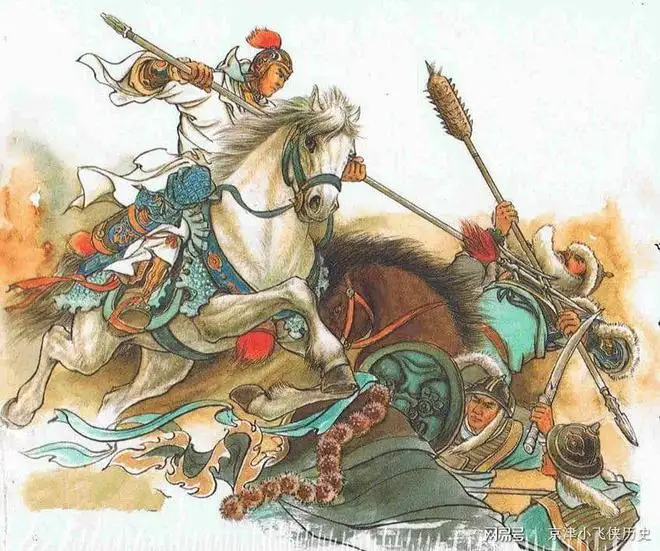 The 'Horse Stance' (馬步 - Ma Bu) Developed from the Need to Sit Upon the Back of a Horse (or Pony) and Control that Animal by the 'Gripping' of the Legs as They Envelop (and Control) the Belly of the Horse! The Pelvic-Girdle Shifts Left, Right or Centre as it 'Directs ' Force! The Horse Moves in the Direction of the Line of Greatest Force! This Technique, When Applied to Standing on the Ground, Generates health, Longevity and tremendous Martial Power! This is Channelled Through the Torso, Head, arms, Legs, Hands and Feet! This is Seen in All Chinese Forms and Japanese Katas! Dear Tony
It is interesting what you say about the idea the of Seiunchin and Seipai Katas once forming a single unit of practice (that is a 'single' Kata). This is exactly the same situation with the three Longfist Forms in our family Hakka style - which contain 32 movements each - but once was practiced as a single Form containing 96 movements! To assist the investigation we can have a look at the etymology of the names of these two Goju Ryu Kata and see if any evidence presents itself: Kata - Seiunchin = 制引戦 制 (Chinese) = Zhi - 制 (Japanese) = Sei - Control, Plan, Regulate, Law, Limit 引 (Chinese) = Yin - 引 (Japanese) = In - Draw (a bow), Pull, Lead, Stretch, Admit, Evade (Leave) 戦 (Chinese) = Zhan - 戦 (Japanese) = Sen - Battle, Fight, War and Conflict Seiunchin Kata = Careful Bow-Drawing in Battle Chinese Name = Zhi Yin Zhan (制引戦) Japanese Name = Sei In Sen (制引戦) Okinawa Name = Sei Un Chin (制引戦) Kata - Seipai = 十八手 十 (Chinese) = Shi - 十 (Japanese) = Ju - Ten, 10, X, Perfection and Utmost 八 (Chinese) = Ba - 八 (Japanese) = Hachi - 8, eight, VIII, Divide and Differentiate 手 (Chinese) = Shou - 手 (Japanese) = te - hand, open (hand), grip and handle Seipai Kata = Eighteen Open Hand Chinese Name: Shi Ba Shou (十八手) Japanese Name: Ju Hachi Te (十八手) Okinawa Name: Seipai (十八手) It looks to me that the last word of the written name '十八手' (Shi Ba Shou) is missing in the way the Kata is named in the West. It seems that the Okinawan 'Seipai' equates to the Chinese 'Shi Ba' (Eighteen - as in '10' + '8') - but that the ideogram '手' (Shou) is missing from the name. The Okinawan name should probably read 'Seipaisou' or something similar. We are probably seeing the Fujian dialect preserved through the Okinawan language - with a descriptive word missing when the Kata is vocally discussed! I do not know why this is. What might be of significance is Pan Yu Ba's 'Arahant Fist' (羅漢拳 - Luo Han Quan) - which is also known as 'Arahant Eighteen Hands' (罗汉十八手 - Luo Han Shi Ba Shou). Does the Seipai Kata represent the 'Arahant Fist'? Even so, there is the closed 'fist' (拳 - Quan) and then there is the 'Open Hand' (手 - Shou). As you know, Sensei, both types of hand are always used - together with the 'palm' (掌 - Zhang). When I was in various Buddhist temples in China, most had statues of the Eighteen Arahants (all enlightened visitors from India thousands of years ago) spread around the periphery of the grounds facing outward with each statue holding different positions with their hands and feet (this sometimes reminds me of Tensho Kata). I spoke and practiced with Warrior-Monks and Nuns who all talked about rebirth, karma and 'meeting' one another again in different lifetimes. There was no violence at all with the flowing hand and foot movements 'evading' every violent movement. However, these people 'sensed' exactly when greed, hatred and delusion was present in the mind of the opponent - and they immediately took action to dissolve it with loving kindness, compassion and understanding! Most of these 'Arahant' Forms involve 'evasion' and simply 'not being there' rather than any forceful application. When power was needed, however, it was generated a) from the ground, and b) from the body-mass of the opponent - as their bodyweight was momentarily 'borrowed' before being 'given back'! What we might be looking at is a combined Goju Ryu Kata entitled 'Arahant Eighteen Hands Regulate and Drawing the Battle Bow'! It could be named like this '羅漢十八手制引戦' (Luo Han Ba Shou Zhi Yin Zhan). Thanks Adrian This is not exactly the same as Bare Knuckle Boxing as practiced in the contemporary West – but might be nearer to the ‘bare knuckle’ equivalent (under the ‘London Prize Fighting Rules’) practiced in the West prior to the advent of the Queensbury Rules and the implementation of ‘gloved’ fighting (in the late 1800s). Indeed, the further back in time the comparison is taken – the nearer the two forms of combat become – with Western boxing originally involving throwing and kicking, and used as an unarmed augmentation to fighting with staffs, swords and pistols, etc. A book I read in my youth in the UK was entitled ‘Cross-Buttocks and Claret’ - referring to bloody public spectacles of punching, kicking, tripping and throwing! My father (Peter Wyles) – from the working-class slums of Leicester was taught by his father (Alfred Gregory Wyles 1916-1976) the bare-knuckle style passed-on by his father (Archibald Britton Wyles 1887-1941 – born in Duddington, Northamptonshire). A bolt upright – two-armed affair that relied on a solid and repetitive jab occasionally follow by a straight-right – the closed hand of which would habitually be used to protect the chin when not being thrown (the 'point' of the chin 'sits' in the 'eye' of the closed-fist). Coupled with elaborate foot-work and ‘swaying’ from the hips – no hooks were used. The arms were used like ‘bats’ to ‘catch’ and ‘hit’ away any incoming blows – including head-butts and elbows. Correct-positioning overcame rapid and continuous movement whilst power of punch overcame diversity of punch. I suspect that in an era when people in the West had never encountered Asian martial arts (or ‘French Savate’), the general paradigm around ‘fighting movement’ would have been quite different and premised upon historical Western institutions involving fighting arts and any innovations that had developed out of these entities. Modern weaponry and service in the professional military (and particularly experiences of combat) may have developed variants and styles of fighting all over the UK. Brutal hand to hand fighting to the death on the battlefield may have ended in unarmed combat when weapons broke, bayonets snapped and ammunition ran-out. Fighting in fairgrounds and outside public house is, of course, a British institution and I have met a number of Romany people in the UK who have been brought-up fighting ‘bare-knuckle’ in what they call the ‘Gypsy Style’! Generally speaking, these Romany people have treated both my Asian and Western martial history with a great respect. As Romany people have had to fight to defend their very existence throughout the years – obviously as a people they have developed a very healthy respect for the fighting arts! Holding the horse stance (馬步 - Ma Bu) requires a stable, physical structure which is permanently held regardless of the emotional or physical feeling’ that is present. This includes – but is not limited to – the pain experienced in the muscles when deep stances of this nature are assumed and maintained over a set period of time. The structure must prevail over every other consideration. The structure must prevail over a determined time scale no matter how tired the mind and body appear to manifest. The point of this mode of psychological and physical discipline is that although the physical structure is deemed ‘permanent’ for the duration of the exercise – the ‘feeling’ capacity of the mind and body is understood to be fleeting, changeable and impermanent. This being the case, feeling tired, distressed or overwhelmed is not a good enough ground to ‘stop’ holding the physical structure of the horse stance! The advanced holding of the horse stance must ‘root’ the practitioner to the ground, whilst the inner energy is circulated through micro and macro-cosmic orbits (simultaneously or alternatively as required), with a deep and full breath that empties and fills the (mind) and body without fail and in a continuous and powerful manner. The mind should be calm, expansive and all-embracing so that the physical body and immediate environment seem to manifest within the fabric of the mind all at once! Energy flow is optimised in an existential and historical manner, with the individual mind ‘detached’ from both whilst permanently interfacing with reality in an indifferent attitude of all-encompassing awareness. All types of feeling is understood to be ‘fleeting’ - whilst the powerful nature of the horse stance is considered the essence of all martial ability. The structure of the Book of Change (Yijing) hexagram is the model which all effective horse stance training should follow. The legs are the bottom two lines, the torso (and arms) is the second to lines) and head is the top two lines. Although not representing any particular hexagram (six-lined structure), the body of the martial artist holding the horse stance represent ANY and ALL of the sixty-four hexagrams that transition from into another. In my training, I often visualise the second hexagram of ‘earth’ as the six ‘yin’ lines symbolise the ‘dropping-down’ activity of ‘water’ sinking into the ground! Of course, as the energy rises up the spine, I visualise hexagram one – or ‘divine sky’ to assist in the ‘lifting’ of force! Any part of the body can represent any hexagram, whilst the entire situation can also be represented a an over-all and defining hexagram! This is an area of study that must be built-up over-time and which requires and in-depth and drawn-out study of the Book of Change (Yijing).
Foundational Taijiquan is practiced by those with health or mobility issues. This is a gentle set of physical movements designed to get a person moving around in a dextrous manner. Taijiquan can be very useful for those who are not fit and need some type of co-ordinated physical movement combined with deep and full breathing. With repetition this training process can build strength in the legs, improve balance and dexterity, and enhance the circulation of oxygen throughout the body by relaxing any and all unnecessary muscular tension. Through aligning the bones (and dropping the bodyweight into the ground), the bones, joints, ligaments and tendons are made more ‘robust’ through correct weight-bearing! Many people spend years working on this practice and quite often gain a considerable suppleness through this relaxation and the sharpening of ‘awareness’ in the mind! For many practitioners in the West, Taijiquan is encountered only later in life, and quite often is not the common spectacle it is in China and throughout many diasporic Chinese communities. The popularity of basic Taijiquan (even in China) relies on quick courses which involve a ‘coach’ who has learned a Short Taijiquan Form over a six-week time period and is then tasked with conveying these movements to two or three classes of students a few times a week! This approach certainly gets the basic techniques ‘out there’ and gives dedicated individuals a training platform which they can build upon at a later date. This can involve longer and more complex Taijiquan Forms (of which there are many Styles), and can even include competitions, seminars and demonstrations, etc. However, even if this type of practice results in winning a World Title for ‘moving about effectively’ - this is still not the complete Taijiquan practice. If you want to master the proper and in-depth practice of Taijiquan, you will have to find a genuine gongfu Master who is knowledgeable in Daoist self-cultivation technique and knows how to ‘fight’ in real life without compromising the sublime spiritual vision that underlies the Chinese martial arts. Following decades training with Master Chan Tin Sang (1924-1993) - I now occasionally have the honour of meeting the odd male or female Taijiquan Master through ‘invitation’ so that my physical and spiritual understanding of Taijiquan can be ‘tested’ and ‘confirmed’. Such encouragement ‘dissolves’ difficult to see ‘habitual blocks’ in the mind and body and moves onward or deeper into penetrating the empty essence of the Dao – as all movement is equally ‘empty’ and ‘still’ - this is why an immense power emanates through the channels that connect the ‘broad earth’ to the ‘divine sky’. This is why every perfect technique is both immensely ‘powerful’ and equally ‘empty’ from beginning to end – and within this freedom is vibrating a positive light that is a combination of wisdom, loving kindness and compassion for the entirety of existence! Advanced Taijiquan is a product of a perfected state of mind and body that expresses the perfect Taijiquan technique – but which is no longer ‘limited’ to the practice of the physical Taijiquan Form - which naturally manifests every moment of everyday, whether formally training, lying in bed, going to the toilet, meditating, making love or carrying-out your work! As many of you reading this either have a low opinion of Taijiquan or believe Taijiquan cannot be used for combat (viewpoints that are a product of a lack of direct cultural knowledge), the manner in which Taijiquan technique is used on a kick-bag is simple and straightforward. Advanced Taijiquan expresses the entire ‘bodyweight’ through any part of the body without any undue effort. Just as the bodyweight ‘drops’ into the ground through the aligned bone-structure – a re-bounding force naturally rises up continuously and without a break in the circuit. This remains true just as long as a practitioner is stood within a strong gravitational field. I start a suitable distance from the kick-bag and carry-out a mini-form set of co-ordinated movements that brings my body nearer the kick-bag and sets-up the power-technique! Today, I started with the left leg forward and threw on the spot a left-lead punch, right-reverse punch and left-lead punch. Weight shifted back onto the reverse right-leg (with bent left-leg forward in ‘cat stance’) and I throw a front-snap kick – landing forward on my properly placed left-foot and bringing the weight onto the left-leg. The power-shot is the reverse right roundhouse-kick – which swings through the air and impacts the bag with considerable and unhindered power! The process is repeated on the other side of the body and I repeat this for three-minutes. Any combination of techniques can be used that test the ‘smoothness’ of Taijiquan technique on the one-side – and the unbroken (and considerable) power on the other. Obviously, being ‘rooted’ is important as is continuously changing sides so that left and right are properly trained and tested (as true combat is unpredictable unlike fighting with rules during sporting encounters). The mind should be calm, still, aware and all-embracing so that it is ‘reflective’ of all phenomena (like a mirror). The Buddhist Surangama Sutra explains this principle, as do various Daoist texts such as the Laozi and Zhuangzi, etc, and the ‘Book of Changes’ (Yijing). Not everyone is trained to this depth of Taijiquan attainment, and not everyone wants to be trained to this degree – but it is an option with the proper training and instruction.
|
AuthorShifu Adrian Chan-Wyles (b. 1967) - Lineage (Generational) Inheritor of the Ch'an Dao Hakka Gongfu System. |
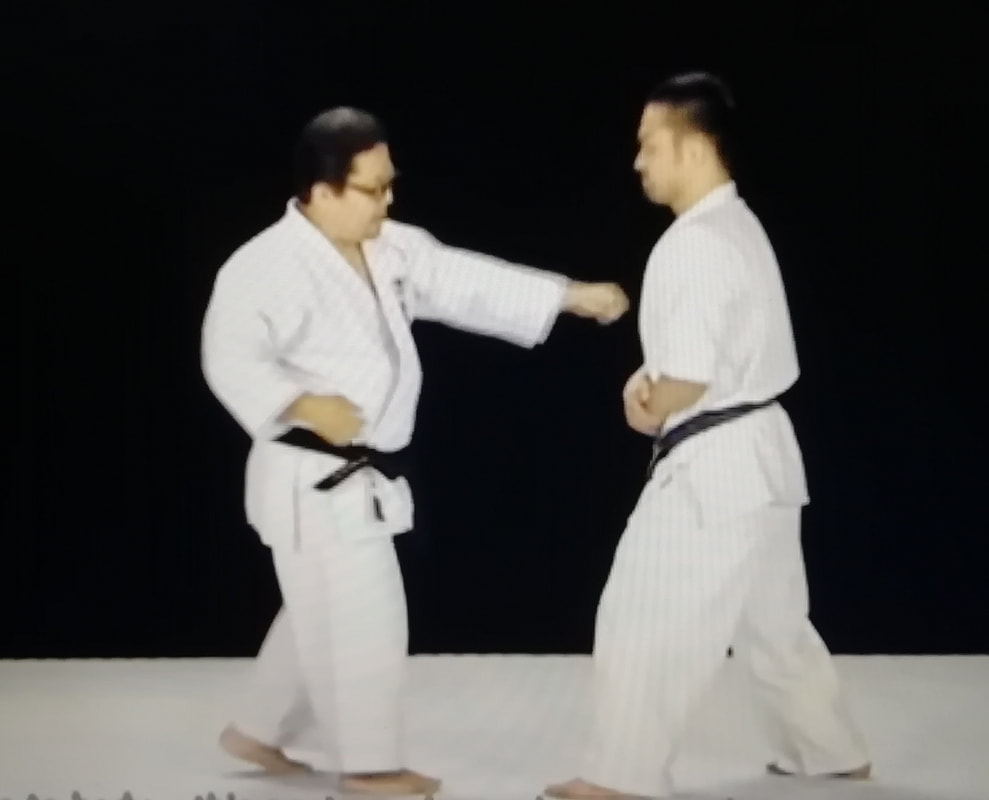
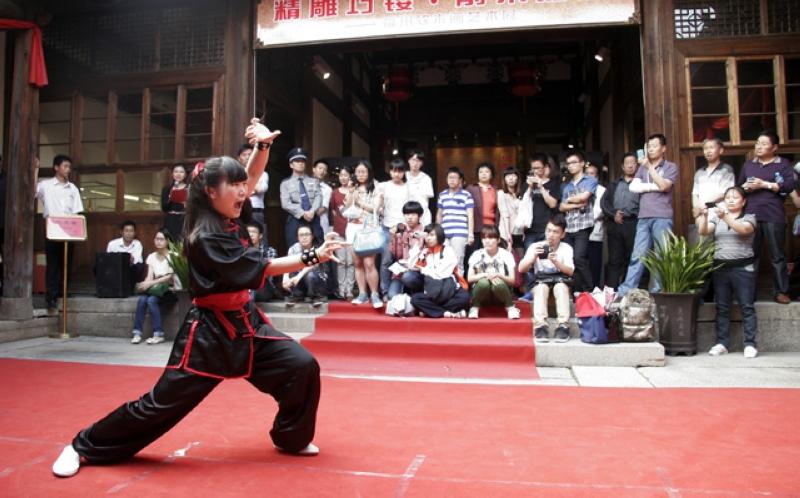
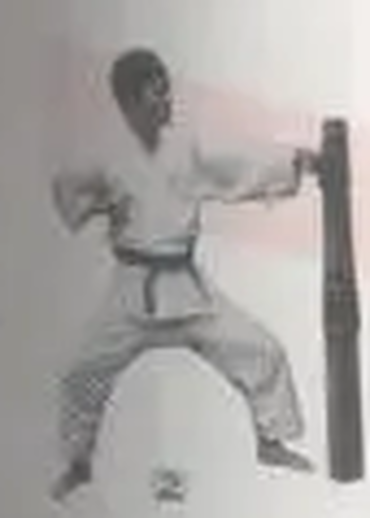
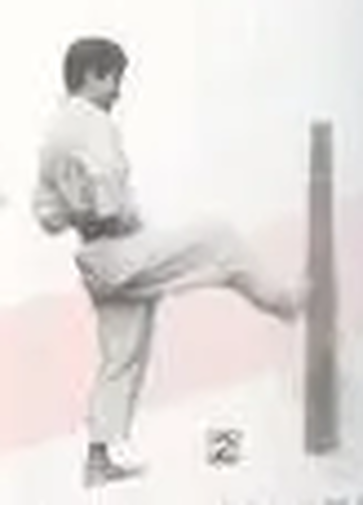
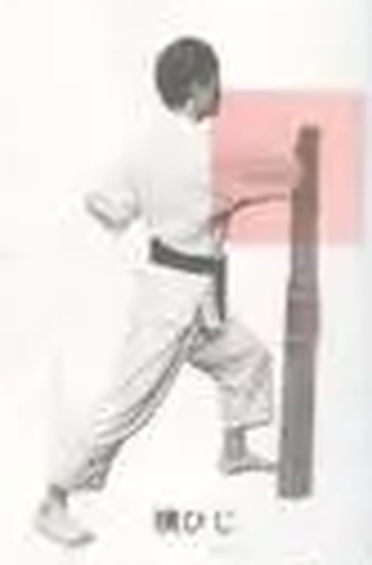
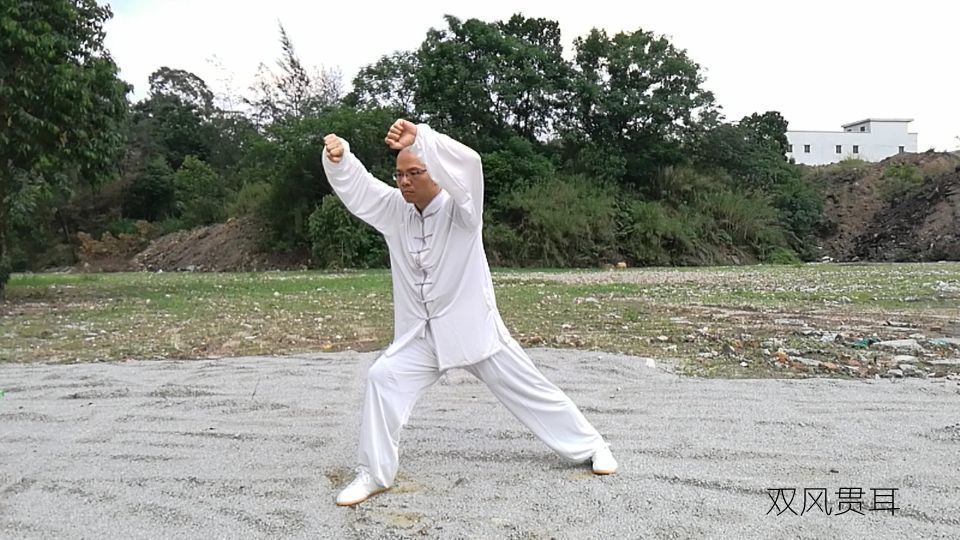
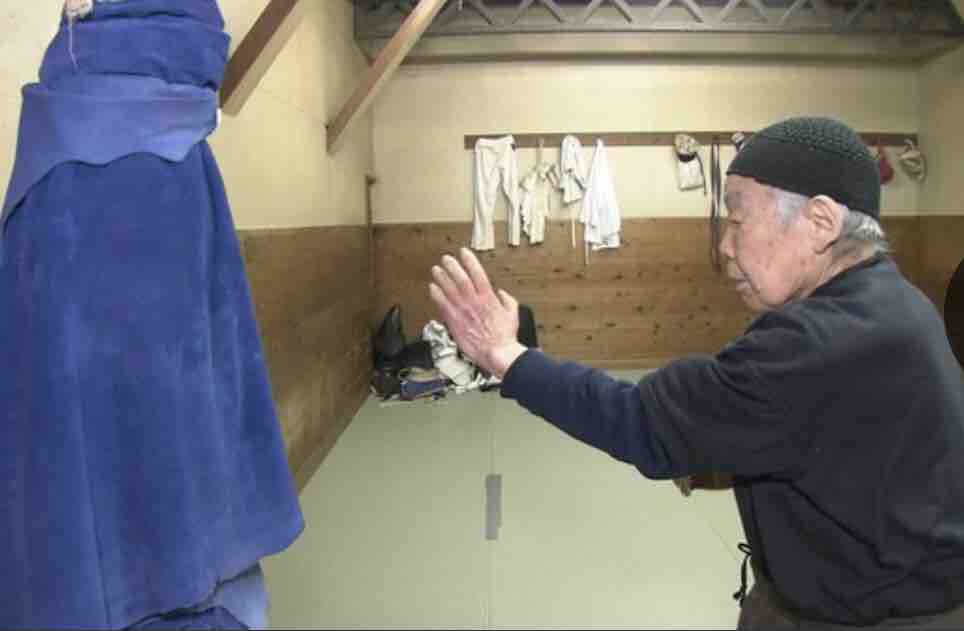
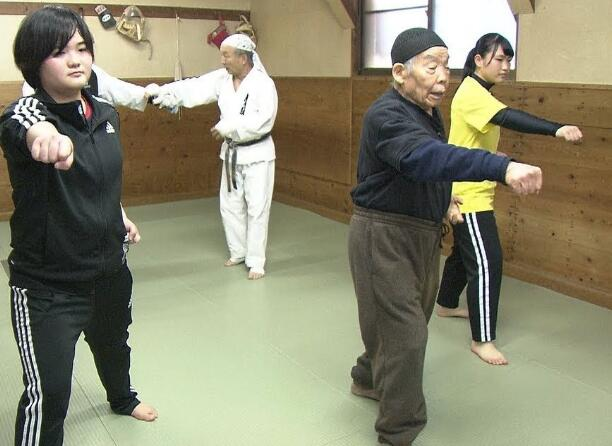
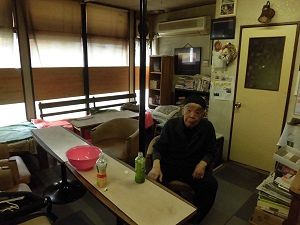
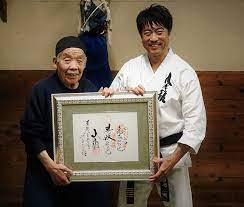
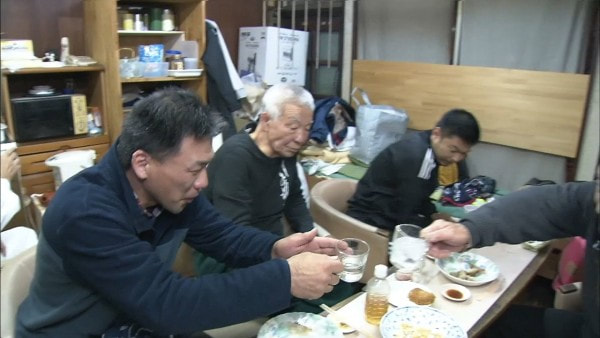
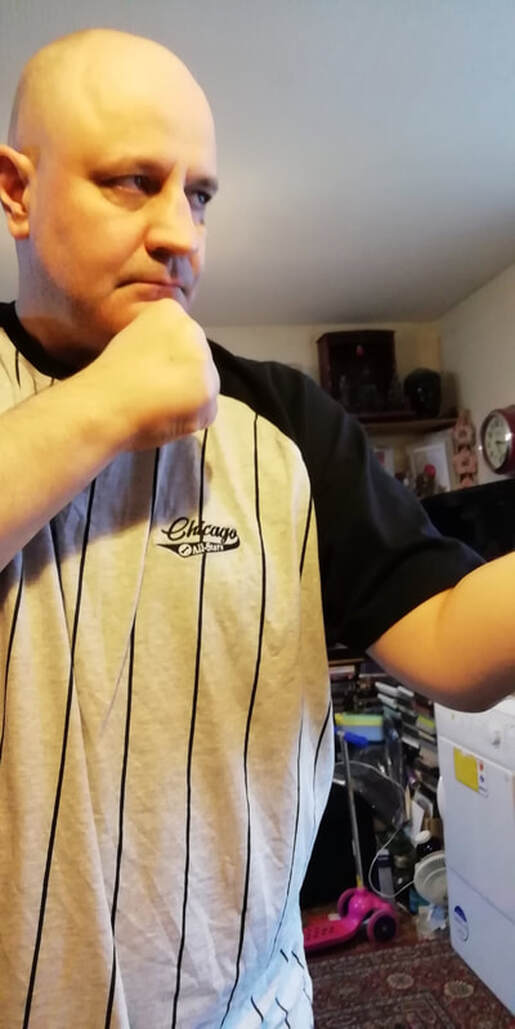
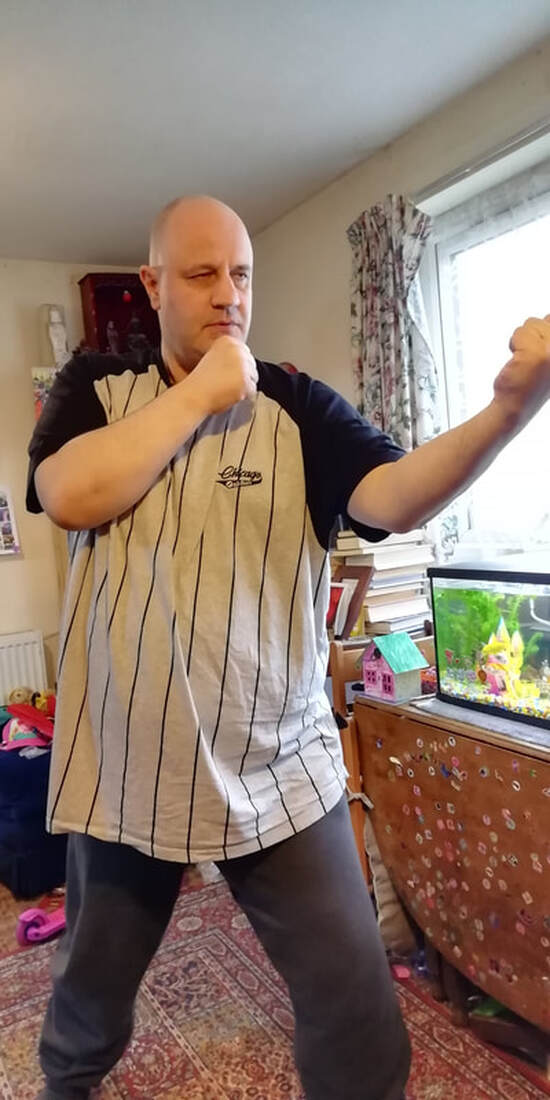
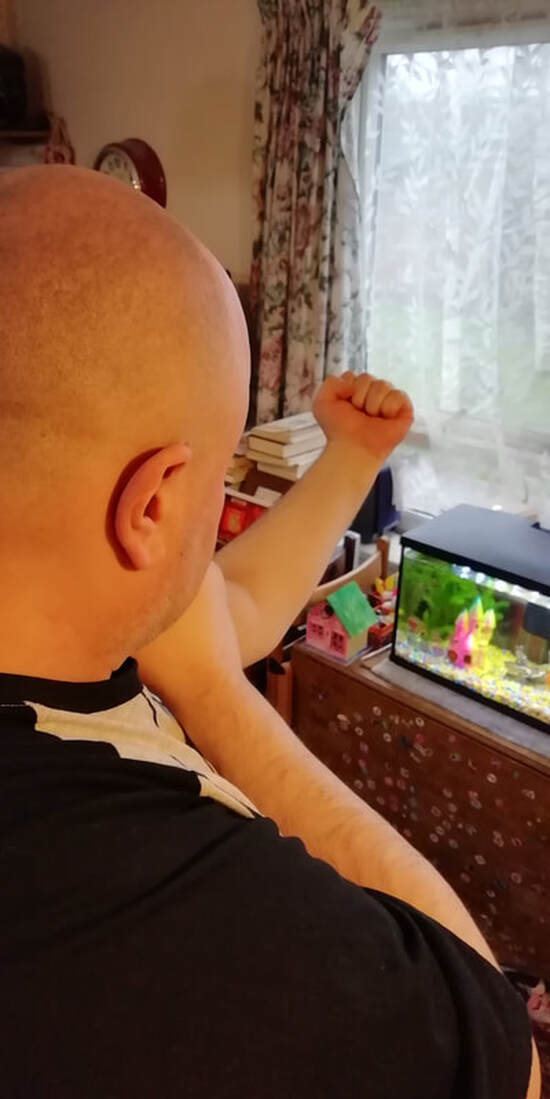
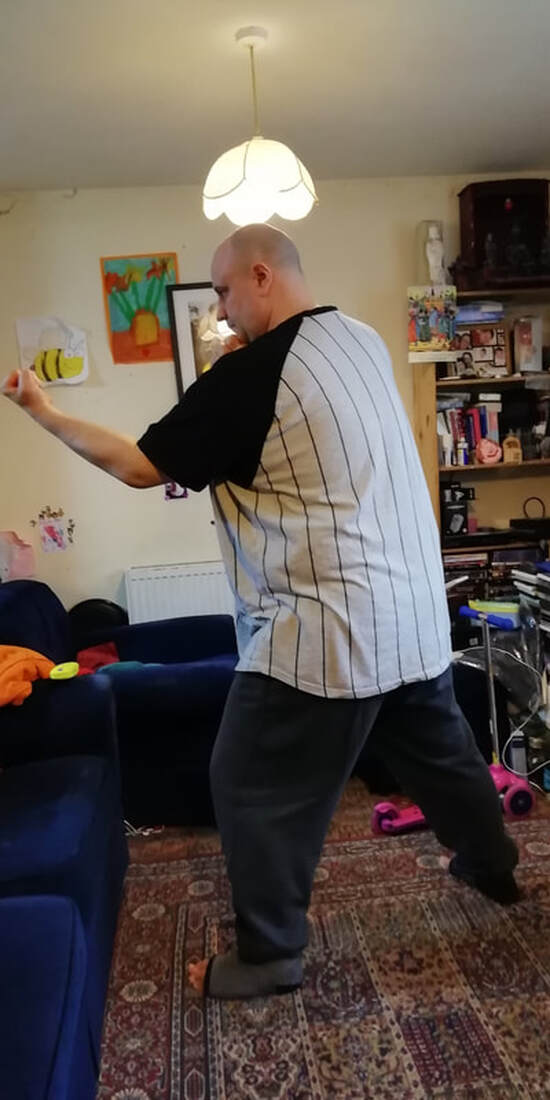
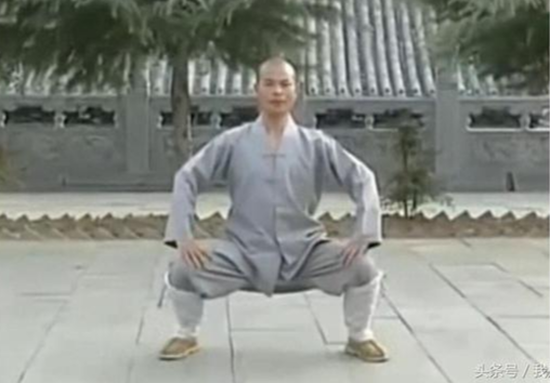
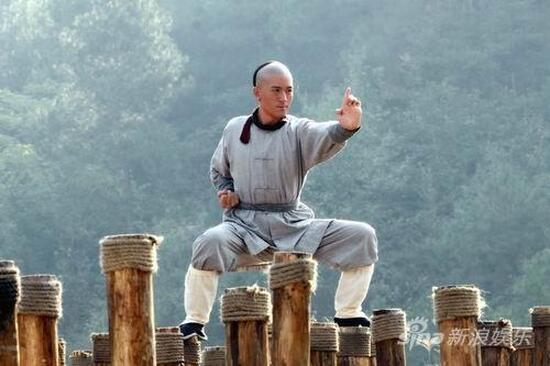
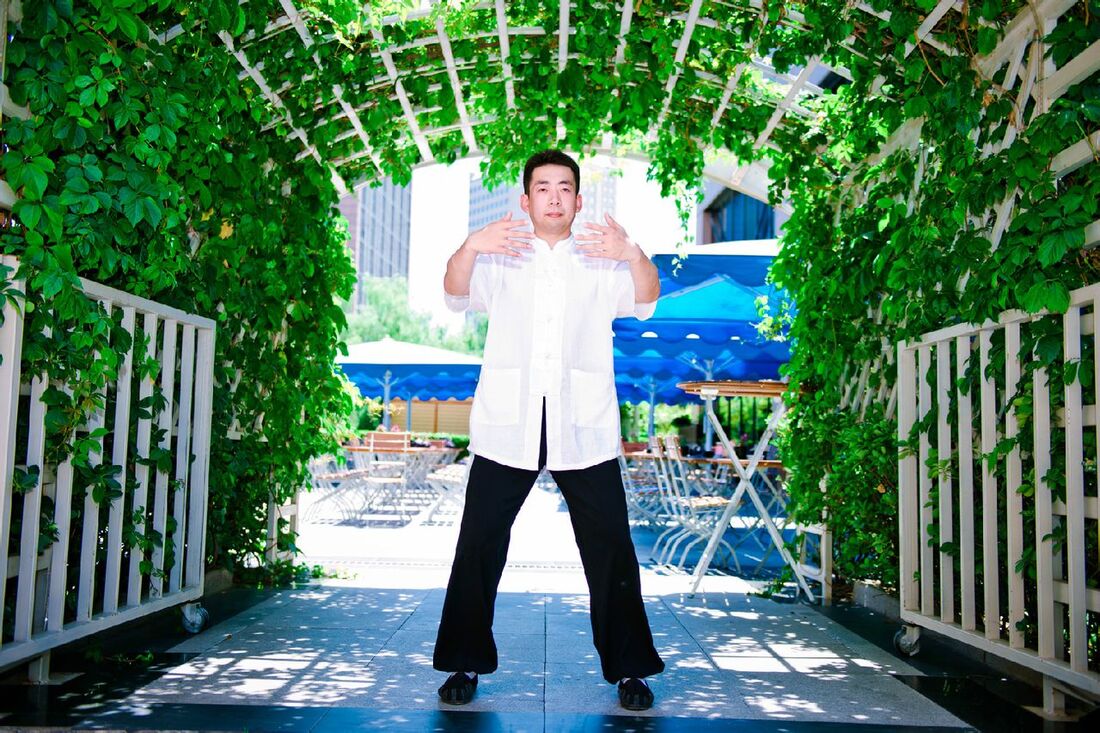

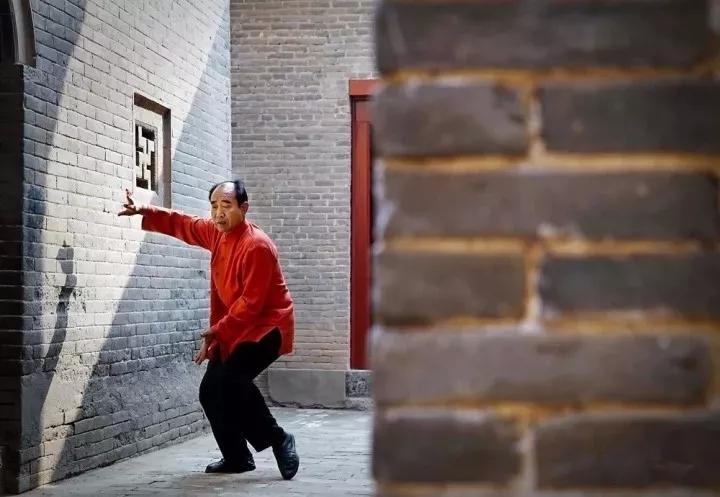
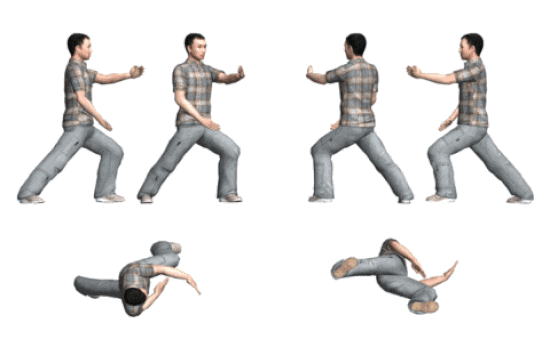
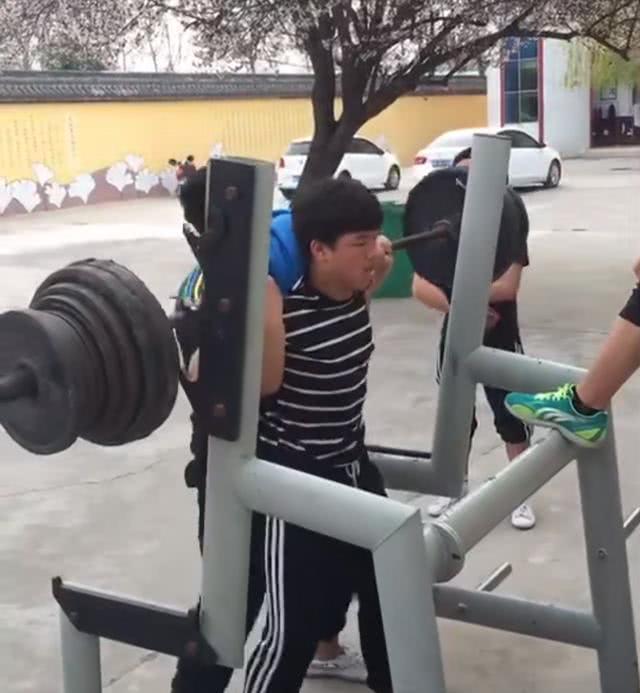
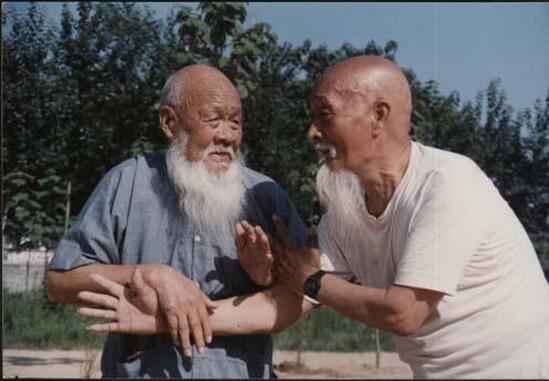
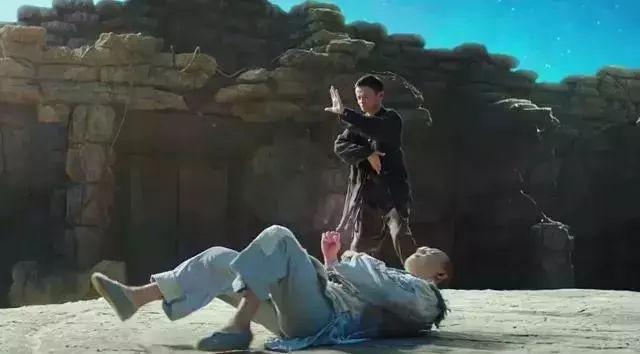
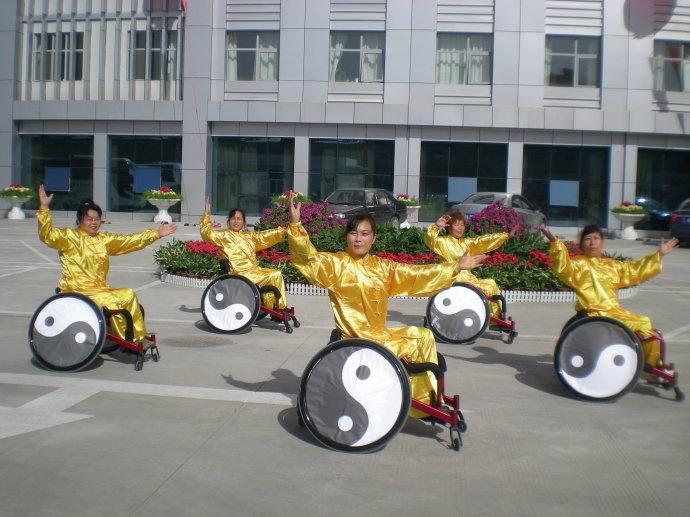
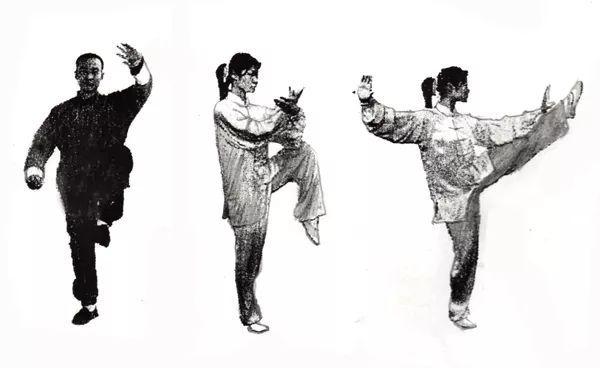
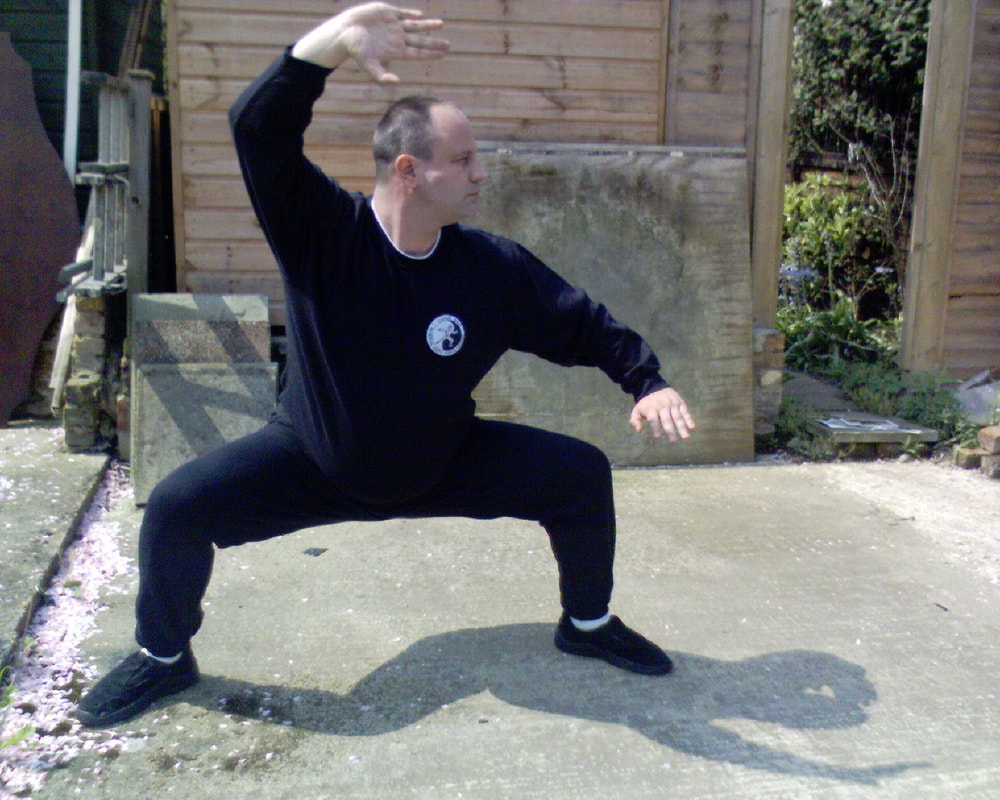
 RSS Feed
RSS Feed